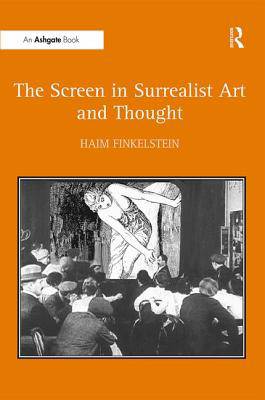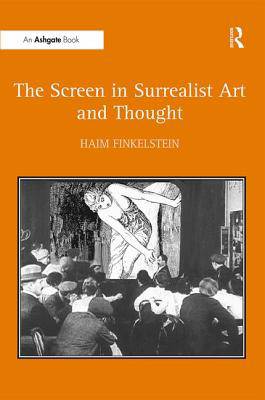
- Retrait gratuit dans votre magasin Club
- 7.000.000 titres dans notre catalogue
- Payer en toute sécurité
- Toujours un magasin près de chez vous
- Retrait gratuit dans votre magasin Club
- 7.000.0000 titres dans notre catalogue
- Payer en toute sécurité
- Toujours un magasin près de chez vous
290,45 €
+ 580 points
Format
Description
An interrogation of the notion of space in Surrealist theory and philosophy, this study analyzes the manifestations of space in the paintings and writings done in the framework of the Surrealist Movement. Haim Finkelstein introduces the 'screen' as an important spatial paradigm that clarifies and extends the understanding of Surrealism as it unfolds in the 1920s, exploring the screen and layered depth as fundamental structuring principles associated with the representation of the mental space and of the internal processes that eventually came to be linked with the Surrealist concept of psychic automatism. Extending the discussion of the concepts at stake for Surrealist visual art into the context of film, literature and criticism, this study sheds new light on the way 'film thinking' permeates Surrealist thought and aesthetics. In early chapters, Finkelstein looks at the concept of the screen as emblematic of a strand of spatial apprehension that informs the work of young writers in the 1920s, such as Robert Desnos and Louis Aragon. He goes on to explore the way the spatial character of the serial films of Louis Feuillade intimated to the Surrealists a related mode of vision, associated with perception of the mystery and the Marvelous lurking behind the surfaces of quotidian reality. The dialectics informing Surrealist thought with regard to the surfaces of the real (with walls, doors and windows as controlling images), are shown to be at the basis of André Breton's notion of the picture as a window. Contrary to the traditional sense of this metaphor, Breton's 'window' is informed by the screen paradigm, with its surface serving as a locus of a dialectics of transparency and opacity, permeability and reflectivity. The main aesthetic and conceptual issues that come up in the consideration of Breton's window metaphor lay the groundwork for an analysis of the work of Giorgio de Chirico, René Magritte, Max Ernst, André Masson, and Joan Miró. The concluding chapter considers several issues that dominate the Surrealist spatiality in the 1930s. Derived from the various spatial concepts associated with the screen paradigm, at times in contradistinction to them, these issues, as the author argues, reflect a gradual eclipse of the screen paradigm in the early years of the decade.
Spécifications
Parties prenantes
- Auteur(s) :
- Editeur:
Contenu
- Nombre de pages :
- 340
- Langue:
- Anglais
Caractéristiques
- EAN:
- 9780754661160
- Date de parution :
- 23-07-07
- Format:
- Livre relié
- Format numérique:
- Genaaid
- Dimensions :
- 156 mm x 234 mm
- Poids :
- 653 g

Les avis
Nous publions uniquement les avis qui respectent les conditions requises. Consultez nos conditions pour les avis.






